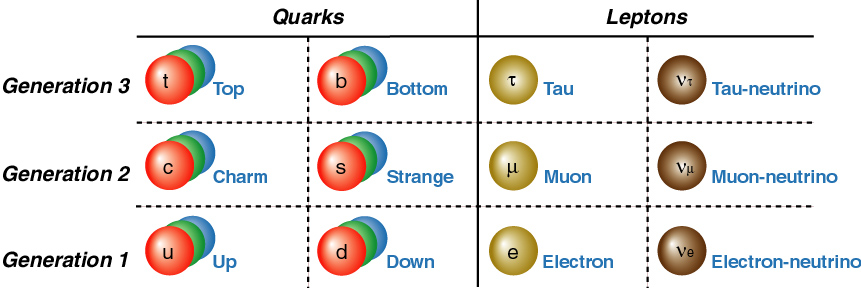Quarks
The six quarks are arranged into three generations, up and down are the lightest,
then come strange and charm, and heaviest of all are bottom and top. Each
generation has associated with it two light particles called leptons - from
the Greek for light. The electron is one of the leptons in the
lightest generation, the other is called the electron-neutrino.
All of ordinary matter can be made from up-quarks, down-quarks, and electrons.
The electron-neutrinos play no role in making up atoms, but they are very
important nevertheless, as we will see later.
Particles of the other generations are identical in every way to the lighter
ones, except they are heavier. That is why they don't appear in ordinary matter,
they tend to shed their excess mass as energy and transform themselves into
the lightest particles - up-quarks, down-quarks, and electrons.
The "periodic table" of the quarks and leptons looks like this. As far as we
know, these particles have nothing inside them - to all intents and purposes,
they are the "atoms" dreamed of by Leucippus 2500 years ago. But who says
history won't repeat itself again...
Particle Physics Education CD-ROM ©2001 CERN



